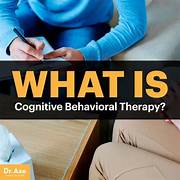
Cognitive-behavioral therapy (CBT) has emerged as one of the most effective evidence-based approaches in treating substance use disorders (SUDs). By addressing the interplay of thoughts, emotions, and behaviors, CBT equips individuals with the tools to understand and manage the triggers, cravings, and maladaptive patterns associated with addiction. As a cornerstone of many treatment programs, CBT is highly adaptable and can be tailored to meet the unique needs of individuals across various stages of recovery.
Understanding the Foundations of CBT
CBT is grounded in the idea that thoughts, feelings, and behaviors are interconnected. In the context of addiction, distorted thinking patterns often perpetuate substance use. For example, individuals may rationalize their behavior (“One drink won’t hurt”) or engage in catastrophizing (“I’ll never be able to stay sober, so why try?”). These cognitive distortions can lead to negative emotions and impulsive behaviors, such as substance use.
Through CBT, individuals learn to identify and challenge these thought patterns, replacing them with healthier and more constructive ways of thinking. This process fosters emotional regulation and promotes behaviors that support recovery goals.
Key Components of CBT in Addiction Treatment
- Identifying Triggers and High-Risk Situations
One of the primary goals of CBT is to help individuals recognize the external and internal triggers that lead to substance use. External triggers might include specific places, people, or events, while internal triggers often involve emotions such as stress, sadness, or boredom.By increasing awareness of these triggers, individuals can develop strategies to avoid or manage them, reducing the likelihood of relapse. - Developing Coping Skills
Addiction often thrives in the absence of effective coping mechanisms. CBT helps individuals build a toolkit of practical skills to handle cravings, stress, and other challenges without resorting to substance use. Techniques such as deep breathing, mindfulness, and problem-solving exercises are commonly incorporated into therapy sessions. - Behavioral Modification
CBT emphasizes the importance of changing behaviors that reinforce addiction. Therapists work with clients to establish new routines and healthier habits, replacing substance use with activities that provide positive reinforcement, such as exercise, hobbies, or social engagement. - Relapse Prevention
Relapse prevention is a central focus of CBT in addiction treatment. Clients learn to anticipate potential setbacks and develop actionable plans to address them. By reframing relapse as a learning opportunity rather than a failure, CBT fosters resilience and a long-term commitment to recovery.
Effectiveness of CBT for Addiction
Research consistently demonstrates that CBT is highly effective in treating a wide range of addictions, including alcohol, opioids, nicotine, and stimulants. Its structured, goal-oriented approach helps individuals achieve and maintain abstinence while addressing co-occurring mental health issues such as anxiety and depression.
CBT is particularly valuable when integrated into a comprehensive treatment plan that includes medication-assisted treatment (MAT), peer support groups, and family therapy. Its flexibility also makes it suitable for various formats, including individual sessions, group therapy, and online interventions.
Conclusion
The role of CBT in addiction treatment is transformative. By addressing the cognitive and behavioral aspects of substance use, CBT empowers individuals to take control of their recovery journey. Its evidence-based techniques, focus on relapse prevention, and adaptability make it an indispensable component of modern addiction treatment programs. As clinicians continue to refine and expand its application, CBT remains a beacon of hope for those seeking freedom from addiction.